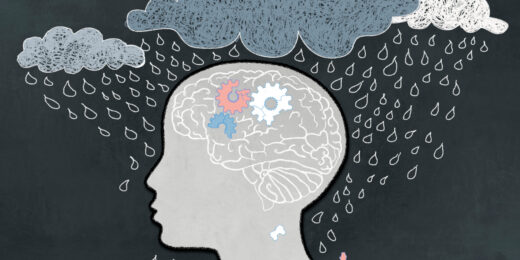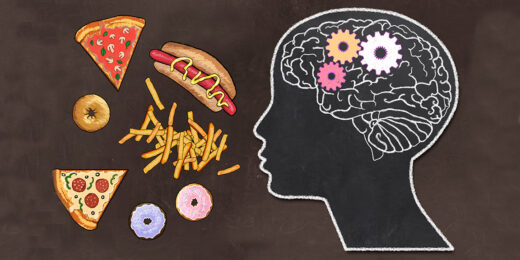The first time it happened, I was in a high school physics class. Suddenly, I couldn't read half of the board. A crack zig-zagged through my vision, obscuring my teacher's notes. "Huh," I thought. "This can't be good."
My classmate walked me to the school nurse, who called my mom. Pain rippled from the back of my neck to my forehead. I'd had headaches before, but not like this. "Ah, your first migraine," Mom said. "Welcome to the club."
For nearly a billion people worldwide, migraine attacks disrupt work, vacation and school. They can be triggered by stress, weather changes, hormone shifts, missed meals or sleep changes -- in other words, just about anything. These reoccurring headaches often spur pain on one side of the head. They can last a few hours or a few days, and they can cause nausea along with sensitivity to noises and light.
Migraine attacks are arguably one of the most befuddling human conditions. They don't show up on brain scans or in bloodwork. Still, they can generate strange neurological symptoms. About a third of migraine sufferers experience a symptom called an aura prior to the onset of a headache. It can manifest as spotty vision, trouble finding words or numbness, said Stanford Medicine neurology fellow Sheena Pillai, MD. Pillai, who specializes in treating and understanding many types of headaches, started getting migraine attacks -- with an aura that skewed her vision -- as a teenager.
"With visual changes, your mind goes to the worst places," she said. "You always wonder: Is there something wrong with my brain? Do I have a tumor?" Her pediatrician assuaged her fears. Now, as a headache fellow, she treats her own patients with migraine. Pillai has learned what helps, and what doesn't.
Not your typical headache
Many people think migraine attacks are just a bad headache. But it's more involved than that. The event typically happens in four stages, and the symptoms, its onset and its resolution, aren't confined to the head.
The first stage involves subtle warning signs. In the 24 hours leading up to migraine headaches, people might get stiff necks, food cravings, constipation, mood changes, or frequent urination or yawning. Scientists don't know why these symptoms occur, but they think a hormone-releasing brain region might be involved.
Stage 2 is the aura, which usually lingers for less than an hour. Stage 3 is the trademark headache, which can last four to 72 hours. Then the last stage arrives: the "hangover," a period of feeling sluggish and confused. And migraine frequency varies widely, occurring weekly, monthly or annually.
Often, patients come to Pillai when their migraine attacks are so frequent or severe that they struggle to do everyday things such as work, drive or take care of their families. "They tell me they need something to be more functional," Pillai said.
Doctors theorize that migraine events begin when a hormone-releasing brain region spurs a wave of neuron activity across the brain. The wave leads to a dilation of blood vessels that causes blood to rush through the organ. In tandem, there's often an increase in inflammatory molecules during migraine, which contributes to the onset of an episode, and sometimes an aura. Studies have also shown that migraine pain is caused by nerve activation along the blood vessels surrounding the brain and spinal cord. But beyond that, the biology behind migraine is largely unclear.
"There seem to be a lot of different mechanisms that lead to migraine, which is what's making it hard to pinpoint the all the details behind the pathophysiology," said Pillai, referring to migraine origins. "It's a surprisingly complex disorder."
What treatments are available?
The most common treatments for migraine are repurposed anti-seizure, blood pressure, antidepressant and immune-modulating medications. Doctors don't know exactly how each medication prevents migraine, but they suspect it involves decreased inflammation, more balanced molecular signaling between neurons, and a constriction of blood vessels that trigger migraine symptoms. Clinicians also administer injections of Botox, a neurotoxin, to specific spots on the head and neck, which can help regulate pain in the brain. Medications for headache pain, such as acetaminophen or ibuprofen, and doctor-prescribed drugs, called triptans, which boost serotonin to constrict cranial blood vessels, can help as well.
While chemical-based migraine therapies help many, some patients need more treatments, Pillai said. Headache specialists sometimes prescribe physical therapy for migraine treatment, but are limited by insurance when it comes to prescribing things like massage. However, these so-called manual therapies can help -- something Pillai saw firsthand when she was treating patients in a rehabilitation unit during her residency.
It made Pillai wonder if manual therapies could be a dependable treatment option for more patients -- especially since consistently taking pain-reducing medications can trigger medication overuse headaches. In collaboration with neurologist Niushen Zhang, chief of the headache division in the Department of Neurology, Pillai wrote a review of scientific literature detailing how different physical manipulation techniques can treat headaches.
She and Zhang outlined how massage can help relieve migraine symptoms by loosening joints and relieving nerve tension. Past studies have shown that targeting muscular trigger points, such as on the shoulder or neck, can reduce migraine frequency and intensity, Pillai said.
"I don't know anyone who doesn't feel at least somewhat better after getting a good massage," Pillai said. "I think certain manual therapies should be used more frequently in the treatment of migraine headaches. Everyone's wired a bit differently, so it's important to have a wide range of treatments available."
Photo by Andrey Popov






